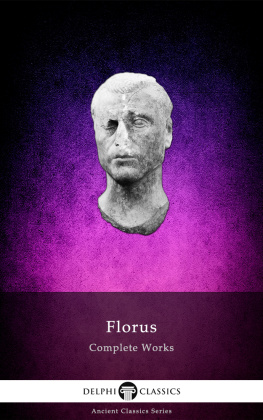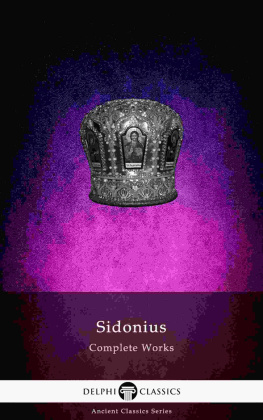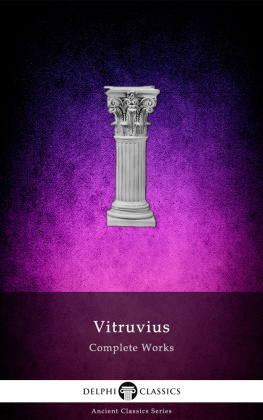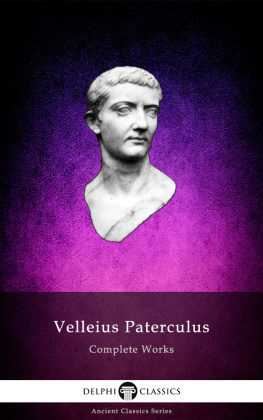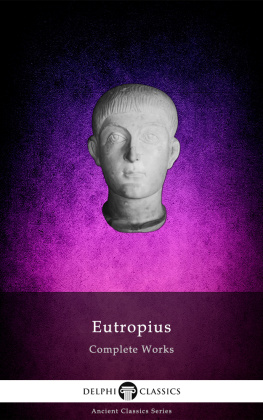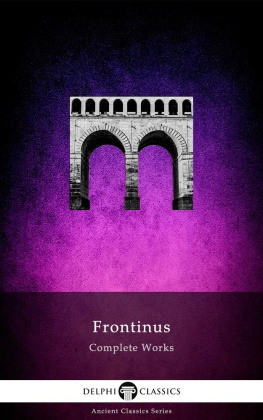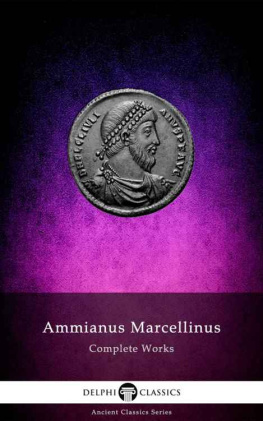
The Complete Works of
FLORUS
(c. 74-130 AD)

Contents

Delphi Classics 2018
Version 1

Browse Ancient Classics







The Complete Works of
FLORUS

By Delphi Classics, 2018
COPYRIGHT
Complete Works of Florus
First published in the United Kingdom in 2018 by Delphi Classics.
Delphi Classics, 2018.
All rights reserved. No part of this publication may be reproduced, stored in a retrieval system, or transmitted, in any form or by any means, without the prior permission in writing of the publisher, nor be otherwise circulated in any form other than that in which it is published.
ISBN: 9781788779944
Delphi Classics
is an imprint of
Delphi Publishing Ltd
Hastings, East Sussex
United Kingdom
Contact: sales@delphiclassics.com

www.delphiclassics.com
The Translations

Roman ruins at Carthage, modern-day Tunis, Tunisia a possible birthplace of the author of Epitome of Roman History
EPITOME OF ROMAN HISTORY

Translated by E. S. Forster
Little is known about Florus, the author of Epitome of Roman History , other than he was born in Africa and lived in Spain and then Rome in Hadrians time. He wrote in a concise and pointed rhetorical style, providing a summary of Roman history and wars in two books in order to show the greatness and decline of Roman morals. The work is based chiefly on Livy and was likely intended to reach Florus own times, but the extant texts ends with Augustus reign (30 BC-AD 14). The Epitome of Roman History is a useful rapid sketch of Roman military history, illuminating many historical events in a favourable tone for the Roman citizens. It consists of a brief sketch of history from the Founding of Rome to the closing of the Temple of Janus by Augustus in 25 BC.
Florus has received criticism on his writing due to inaccuracies found chronologically and geographically in his stories, yet the Epitome of Roman History was very popular during the late Antiquity and the Middle Ages, as well as being used as a school book until the nineteenth century. In the manuscripts, the writer is variously named as Julius Florus, Lucius Anneus Florus, or simply Annaeus Florus. Due to certain similarities of style, he has also been identified as Publius Annius Florus, poet, rhetorician and friend of Hadrian.

The Capitoline Wolf, Etruscan, fifth century BC, depicting an early scene in the Founding of Rome

Image of the Temple of Janus on a coin from the reign of Nero (54-68 AD). The closing of the temple is one of the last events detailed in the Epitome.
CONTENTS

Posthumous portrait of Emperor Hadrian; bronze, Roman artwork, c. 140 AD, Louvre, Paris
BOOK I.
I. The period of the Seven Kings, beginning with Romulus
The Roman people during the seven hundred years, from the time of King Romulus down to that of Caesar Augustus, achieved so much in peace and war that, if a man were to compare the greatness of their empire with its years, he would consider its size as out of all proportion to its age. [2] So widely have they extended their arms throughout the world, that those who read of their exploits are learning the history, not of a single people, but of the human race. By so many toils and dangers have they been buffeted that Valour and Fortune seem to have competed to establish the Roman Empire. [3] So, as the history of Rome is especially worthy of study, yet because the very vastness of the subject is a hindrance to the knowledge of it, and the diversity of its topics distracts the keenness of the attention, I intend to follow the example of those who describe the geography of the earth, and include a complete representation of my subject as it were in a small picture. I shall thus, I hope, contribute something to the admiration in which this illustrious people is held by displaying their greatness all at once in a single view.
[4] If anyone were to contemplate the Roman people as he would a single individual and review its whole life, how it began, how it grew up, how it arrived at what may be called the maturity of its manhood, and how it subsequently as it were reached old age, he will find that it went through four stages of progress. [5] The first period, when it was under the rule of kings, lasted for nearly four hundred years, during which it struggled against its neighbours in the immediate vicinity of the capital. This period will be its infancy. [6] Its next period extends from the consulship of Brutus and Collatinus to that of Appius Claudius and Quintus Fulvius, a space of one hundred and fifty years, during which the Roman people subjugated Italy. It was an age of extreme activities for its soldiers and their arms, and may therefore be called its youth. [7] The next period is the hundred and fifty years down to the time of Augustus Caesar, during which it spread peace throughout the world. This was the manhood and, as it were, the robust maturity of the empire. [8] From the time of Caesar Augustus down to our own age there has been a period of not much less than two hundred years, during which, owing to the inactivity of the emperors, the Roman people, as it were, grew old and lost its potency, save that under the rule of Trajan it again stirred its arms and, contrary to general expectation, again renewed its vigour with youth as it were restored.
Next page
